Abstract
The thymus, rib, and liver from a series of 200 children found unexpectedly dead showed that in over 90% of these children the costochondral junction indicated that a retardation in growth velocity had preceded death. In a similar proportion of children the liver showed fatty change indicating a metabolic upset, which in 5% was of severe degree. Changes in the thymus compatible with a normal reaction to infection were observed in only a little over half of the child deaths. An absence of gross thymic reaction in some children in whom there was other evidence of infection suggests that in some an abnormal immunological reaction was taking place. It is concluded that careful systematic clinical monitoring of growth in these children would have shown abnormality in nearly all.
Full text
PDF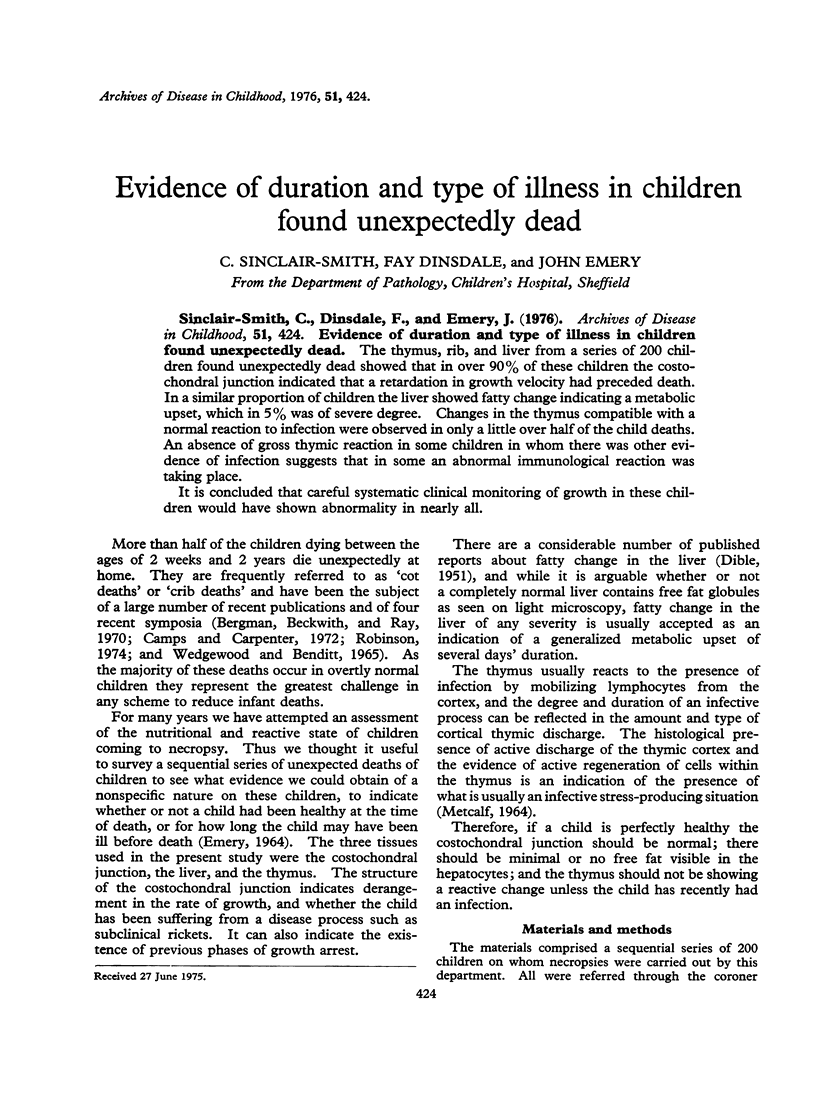
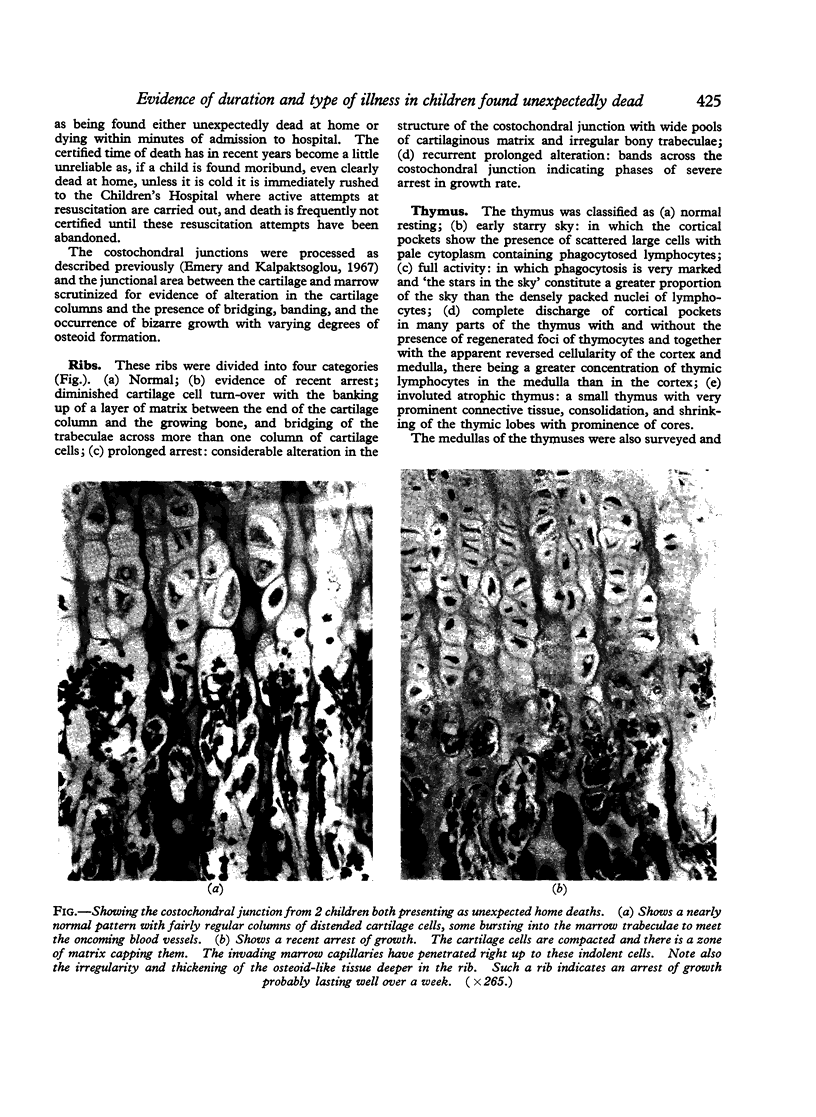
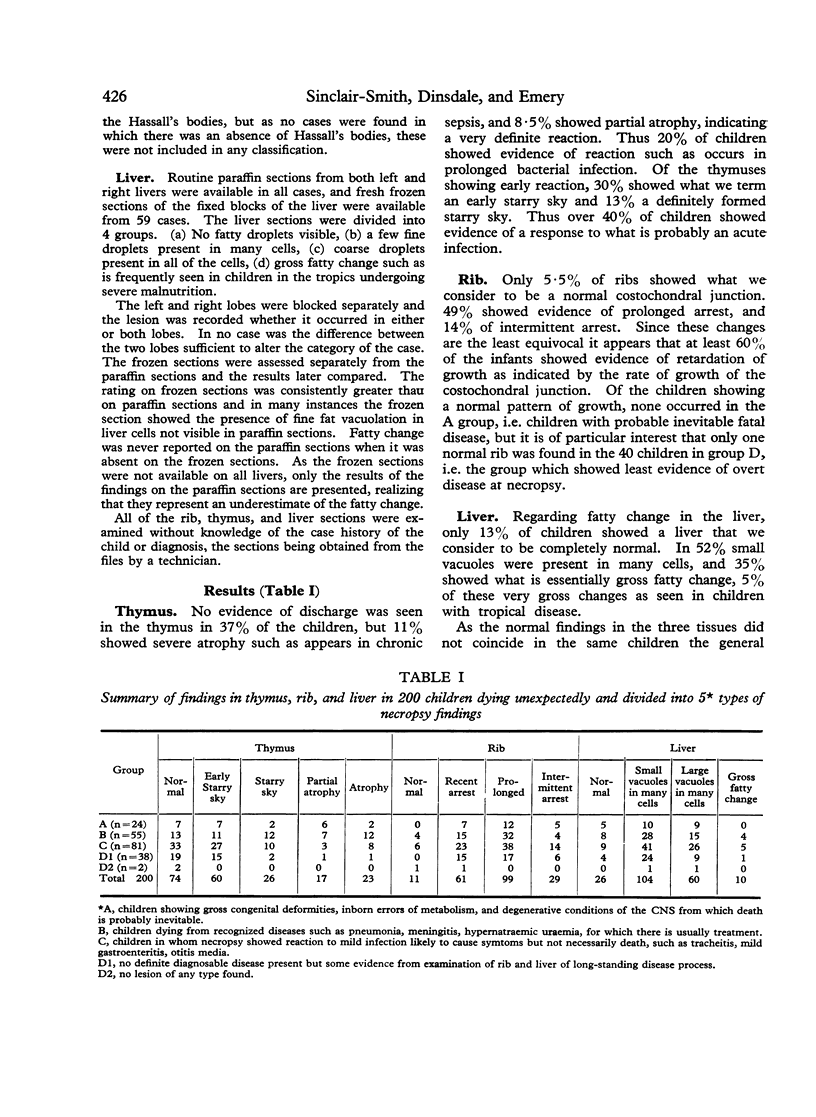
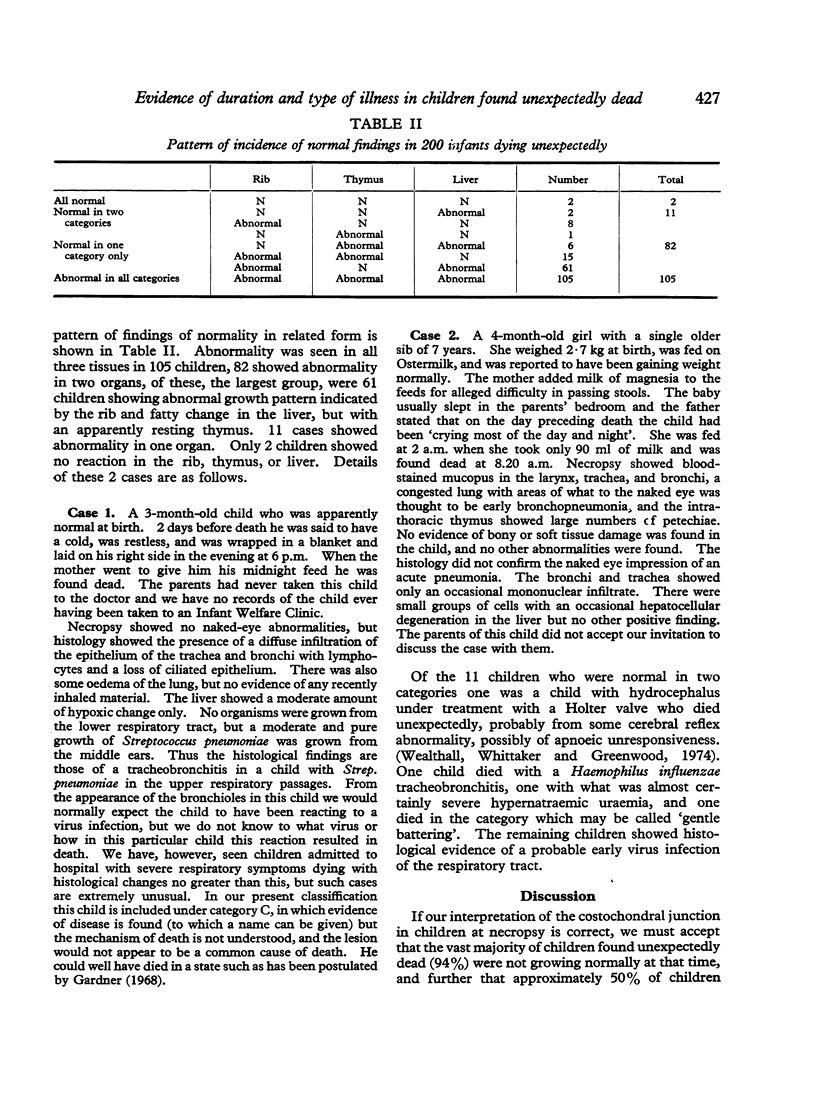
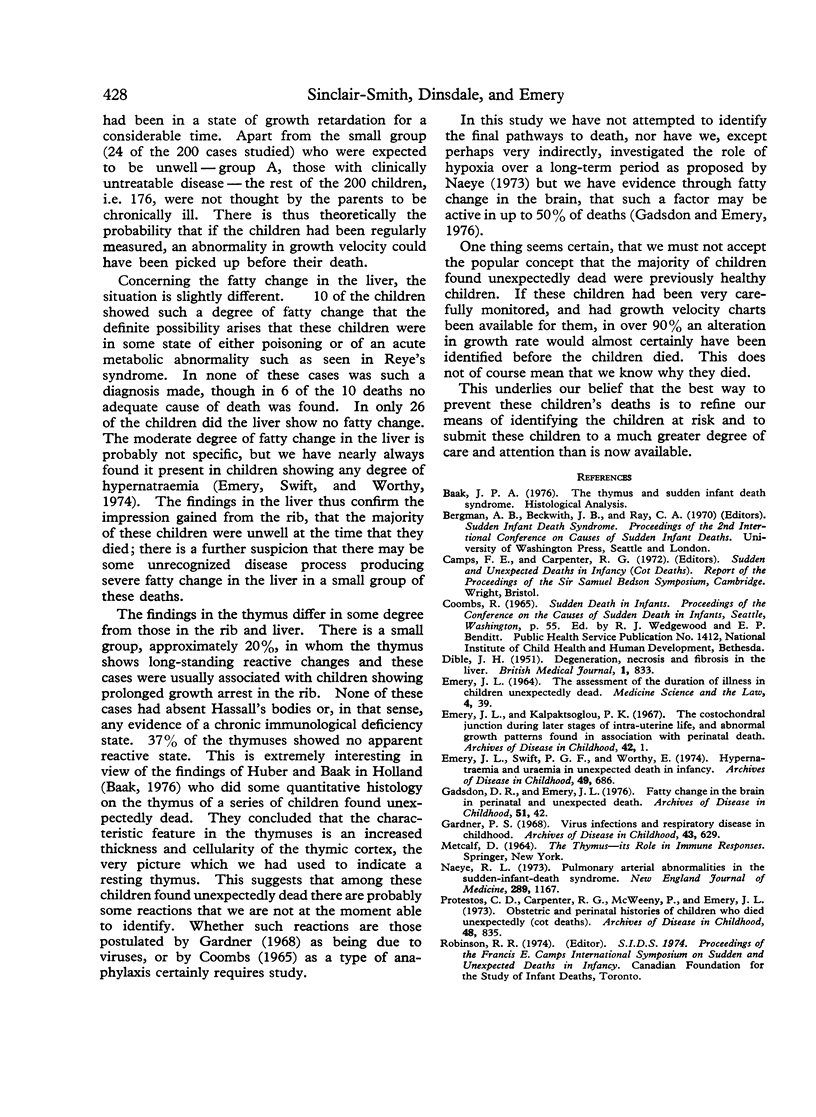
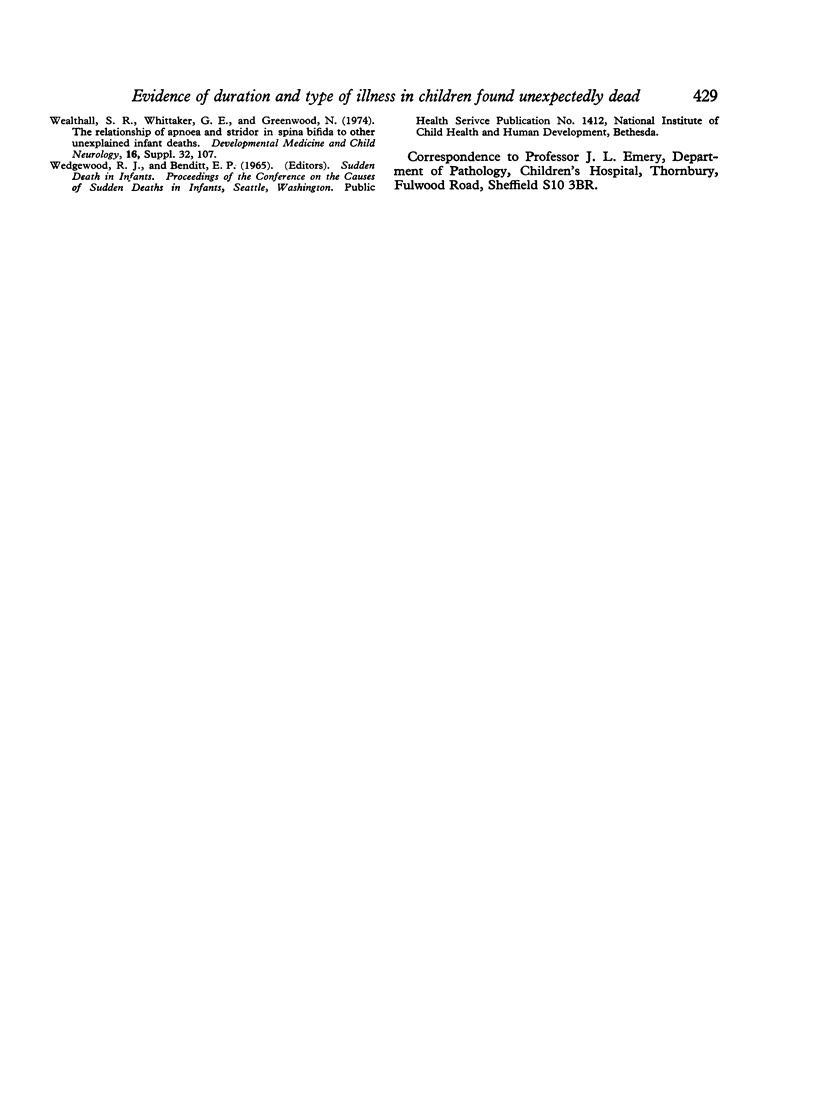
Images in this article
Selected References
These references are in PubMed. This may not be the complete list of references from this article.
- DIBLE J. H. Degeneration, necrosis and fibrosis in the liver. Br Med J. 1951 Apr 21;1(4711):833–841. doi: 10.1136/bmj.1.4711.833. [DOI] [PMC free article] [PubMed] [Google Scholar]
- EMERY J. L. THE ASSESSMENT OF THE DURATION OF ILLNESS IN CHILDREN UNEXPECTEDLY DEAD. Med Sci Law. 1964 Jan;4:39–42. doi: 10.1177/002580246400400109. [DOI] [PubMed] [Google Scholar]
- Emery J. L., Kalpaktsoglou P. K. The costochondral junction during later stages of intrauterine life, and abnormal growth patterns found in association with perinatal death. Arch Dis Child. 1967 Feb;42(221):1–13. doi: 10.1136/adc.42.221.1. [DOI] [PMC free article] [PubMed] [Google Scholar]
- Emery J. L., Swift P. G., Worthy E. Hypernatraemia and uraemia in unexpected death in infancy. Arch Dis Child. 1974 Sep;49(9):686–692. doi: 10.1136/adc.49.9.686. [DOI] [PMC free article] [PubMed] [Google Scholar]
- Gadsdon D. R., Emery J. L. Fatty change in the brain in perinatal and unexpected death. Arch Dis Child. 1976 Jan;51(1):42–48. doi: 10.1136/adc.51.1.42. [DOI] [PMC free article] [PubMed] [Google Scholar]
- Gardner P. S. Virus infections and respiratory disease of childhood. Arch Dis Child. 1968 Dec;43(232):629–645. doi: 10.1136/adc.43.232.629. [DOI] [PMC free article] [PubMed] [Google Scholar]
- Naeye R. L. Pulmonary arterial abnormalities in the sudden-infant-death syndrome. N Engl J Med. 1973 Nov 29;289(22):1167–1170. doi: 10.1056/NEJM197311292892204. [DOI] [PubMed] [Google Scholar]
- Protestos C. D., Carpenter R. G., McWeeny P. M., Emery J. L. Obstetric and perinatal histories of children who died unexpectedly (cot death). Arch Dis Child. 1973 Nov;48(11):835–841. doi: 10.1136/adc.48.11.835. [DOI] [PMC free article] [PubMed] [Google Scholar]
- Wealthall S. R., Whittaker G. E., Greenwood N. The relationship of apnoea and stridor in spina bifida to other unexplained infant deaths. Dev Med Child Neurol. 1974 Dec;16(6 Suppl 32):107–116. doi: 10.1111/j.1469-8749.1974.tb03458.x. [DOI] [PubMed] [Google Scholar]



